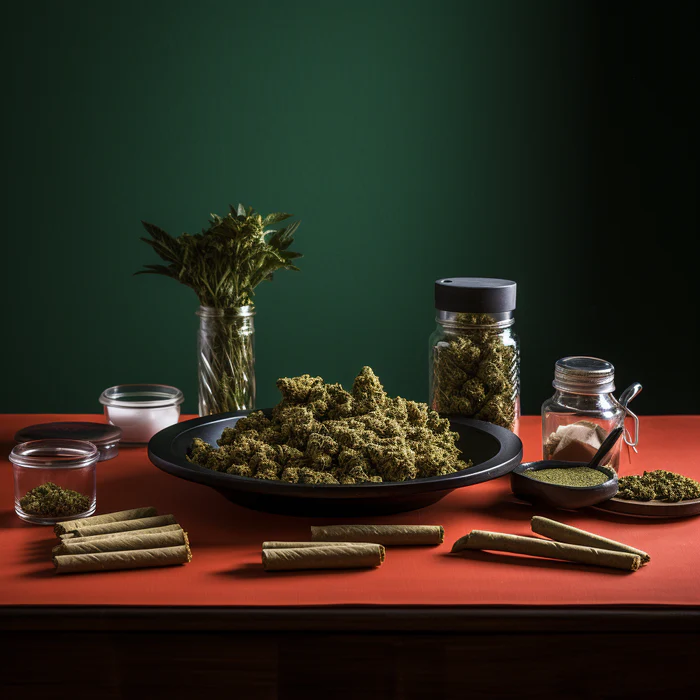What is the Main difference between a joint and a blunt?
If you’ve ever visited a smoke circle or a dispensary, you’ve most certainly seen two common cannabis consumption methods: joints and blunts. While they may appear to be identical at first glance, there are several key differences between the two. This post will delve into the world of joints and blunts to help you understand how they differ. Difference between a joint and a blunt.
Understanding the basics: Joints and Blunts
Before we get into the specifics, let’s go over the principles. Both joints and blunts are methods of smoking cannabis, but there are some important distinctions to be aware of.
Joints and blunts are two popular and time-tested cannabis consumption methods. Each has an own personality and charm, making it a favorite among cannabis enthusiasts.
A Joint’s Definition
In general, a joint is a cannabis cigarette rolled with rolling papers. These papers have been specifically designed to burn smoothly, allowing you to enjoy the herb’s flavor and effects. Joints have been around for decades and remain a popular choice among cannabis users.
Many marijuana lovers see rolling a joint as an art form. A well-rolled joint that burns evenly and provides an enjoyable smoking experience requires skill and precision. The phases in the procedure include selecting the appropriate strain of cannabis, grinding it to the ideal consistency, and evenly dispersing it within the rolling paper.
One of the advantages of smoking a joint is that you may completely feel the fragrances and intricacies of the cannabis strain. Rolling papers are often thin and flavorless, allowing the herb’s natural terpenes and cannabinoids to shine through. As a result, joints are popular among people who wish to feel the full range of a strain’s effects.
The Meaning of A Blunt
A blunt, on the other hand, is a cannabis cigar wrapped in tobacco paper, often known as a “blunt wrap.” Unlike joints, blunts typically include some tobacco, which adds a distinct flavor and may alter the whole smoking experience.
Blunts have a lengthy history, extending back to the beginning of cannabis consumption. They first appeared in the 1970s hip-hop culture and swiftly gained popularity among musicians and music enthusiasts alike. Rolling a blunt varies from rolling a joint in that the tobacco paper used is thicker and requires a distinct technique.
Tobacco in a blunt wrap adds a distinct flavor profile to the smoking experience. The combination of cannabis and tobacco creates a peculiar flavor that some people enjoy while others find overwhelming. Blunts are generally associated with a more intense and robust smoking experience, making them a popular choice for those seeking a stronger high.
It’s worth noting that blunts are often larger than joints, allowing for more cannabis to be ingested in a single session. As a result, they’re a popular choice for group smoking sessions or those who like a longer-lasting experience. Difference between a joint and a blunt.
Whether you prefer the simplicity and purity of a joint or the boldness and intricacy of a blunt, each approach offers a unique way to enjoy the benefits of cannabis. The choice between the two is primarily a matter of personal preference, as each has distinct traits that appeal to various tastes and desires.
The anatomy of a joint and a blunt
After we’ve covered the nomenclature, let’s have a look at the components that make up joints and blunts.
Rolling a joint or blunt is a form of art in and of itself. It requires dexterity, competence, and understanding of the materials used. Both joints and blunts have unique characteristics that provide smokers a variety of smoking experiences. Alien Labs
Materials used in joints
Rolling papers made from a variety of materials, including rice, hemp, and even cellulose, are frequently used to roll joints. These sheets are thin and lightweight, and they burn evenly, providing a comfortable smoking experience. The type of rolling paper used might affect the flavor and burn rate of the joint.
Rice rolling papers, for example, are well-known for providing a moderate burn while minimizing interference with cannabis flavor. Purists who want to fully experience the strain’s original odors and aromas may prefer them.
Hemp rolling papers, on the other hand, are popular among environmentally conscious consumers. These papers are made using hemp plant fibers, a sustainable and renewable resource. Hemp rolling papers are well renowned for their durability and ability to enhance the smoking experience.
Flavored rolling papers are a popular choice for smokers looking to add another layer of flavor. These papers are flavored with strawberries, mangoes, and chocolate. They can improve the flavor of cannabis, creating a unique and enjoyable smoking experience.
Blunts are made of several materials.
Blunts, on the other hand, are wrapped in tobacco paper, which is thicker and more durable than rolling sheets. This tobacco component has a significant impact on the taste and aroma of the smoke, usually infusing it with tobacco flavor. The type of tobacco paper used can significantly affect the whole smoking experience.
Because of the tobacco wrap, blunts are known for their bold and rich flavors. Tobacco paper can add a little sweet and earthy flavor to cannabis, resulting in a unique flavor profile. Some smokers like the combination of cannabis and tobacco, while others prefer a more delicate flavor.
It’s worth noting that blunts can also be completely filled with cannabis, known as a “backwood.” Backwoods is a popular strain among cannabis enthusiasts who prefer the strain’s natural taste and fragrance above any extra tobacco flavor. Backwood rolling involves meticulously removing tobacco from a cigar wrap and replacing it with crushed cannabis.
Whether you prefer the clear and pure sensation of a joint or the rich and savory flavor of a blunt, the materials you choose have a big impact on your smoking experience. Experimenting with different rolling papers or tobacco wraps can expose cannabis enthusiasts to a new universe of flavors and experiences.





